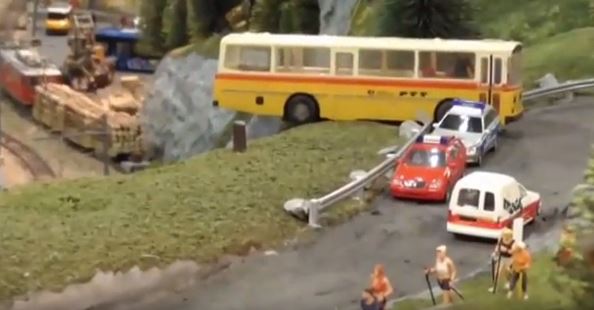Everything on model trains, model railroads, model railways, locomotives, model train layouts, scenery, wiring, DCC and more. Enjoy the world's best hobby... model railroading!
How to Anchor a Drive Cog on a Flying Scotsman
John A asks readers:
“Can anyone tell me how I can anchor the nylon drive cog on my Flying Scotsman, as unlike the brass ones, the main shaft is not grooved and are held by 2 brass inserts. These slide when motor rotates and the engine remains stationary.”
Fixing an 022 Switch Post Problem
Gary operates O scale and asks readers:
“I am in the process of tying power wiring to an 022 switch, as the center post pulled out from the frame. I know this post is a ground. I can’t find a way of getting it back down. It was probably riveted. I need a solution. Thanks”
Which Turnouts are Best – Remote or Manual?
![]() Reggie models N scale and wants readers advice on turnouts:
Reggie models N scale and wants readers advice on turnouts:
“I have started modeling a layout and I was interested on getting some feedback about turn outs, remote versus manual. Which type is the most preferred and why?”
DCC Wiring vs. DC Wiring
Art models N scale and has this question for readers:
“I have watched many seemingly simple videos on DCC wiring and it seems to me that the only real difference from DC is the installation of a bus line and feeders at intermittent spots along the layout BUT the bus location line still has to be connected to the main power source, right? So why does running DCC necessitate installation of a the bus and feeders if ultimately the power is coming from th same main source? Sorry if this is a stupid question. I would love to go DCC to get all the sounds, horns, engines, etc but it just seems like an awful lot of work! I am using Kato unitrack by the way. Thanks in advance for any help!”
How To Fix Lighting Problems
Keith has a lighting question for readers:
I run a OO analogue system on my layout.I have 4 types of lights up:
1/ Tardis box
2/ Ice cream van
3/ Security light
4/ Building/street lights
Each of these are run separately but the building and street lights come on but after a short time they fade out and go off. If I leave them for a short while I can turn them back on but again will go off. Can any of your readers give me any advise to rectify this problem. All the power comes off a Hornby HM2000.
How to Suspend a Track from the Ceiling In Candy Store
 Simon has an unusual question for readers:
Simon has an unusual question for readers:
“Hi all, I have never had a train set in my life and this is what I want to do. I have a sweet shop in Sutton on sea and the room is around 5 meters sq but I want to suspend the track from the ceiling so that you can see from under the track as well. I would like to use O gauge for the size of train. How can I suspend the track so it looks like it’s floating. What track do I use? How many are there? Where do I get it from? I really have know idea where to start if any one is local to me pop in and I sort you a free bag of sweets (candy). lol.”
Climb into a Bullet Train Cockpit Simulator at the Beijing Railway Museum in China
This 2 minute video shows some of the MOW equipment on display at the Beijing Railway Museum near Tiananmen Square in Beijing China. The museum tracks 130 years of Chinese railways right up to high speed bullet train roll-out with the network now the most extensive in the world. This clip shows closeups of the ballastless track used for the high speed trains. I’m sure you’ll find the technology interesting!
Getting Started in Model Railroading
William asks readers:
“I want to start in model railroad with my two grandsons. Which is the best way to start; buying a ready built set or buy individual pieces? I will start small and gradually build to a larger layout. Any suggestions please.”
How To Build Scale Model Windows
Ernest models HO and asks readers:
“I have started scratch building model buildings and I was wondering if anyone knows a good way to make HO windows? I know that I can order them from Grant Line, but the postal costs are so high that I would have to order them in bulk. Is there a way to build them myself? Keep up the good work.”



















